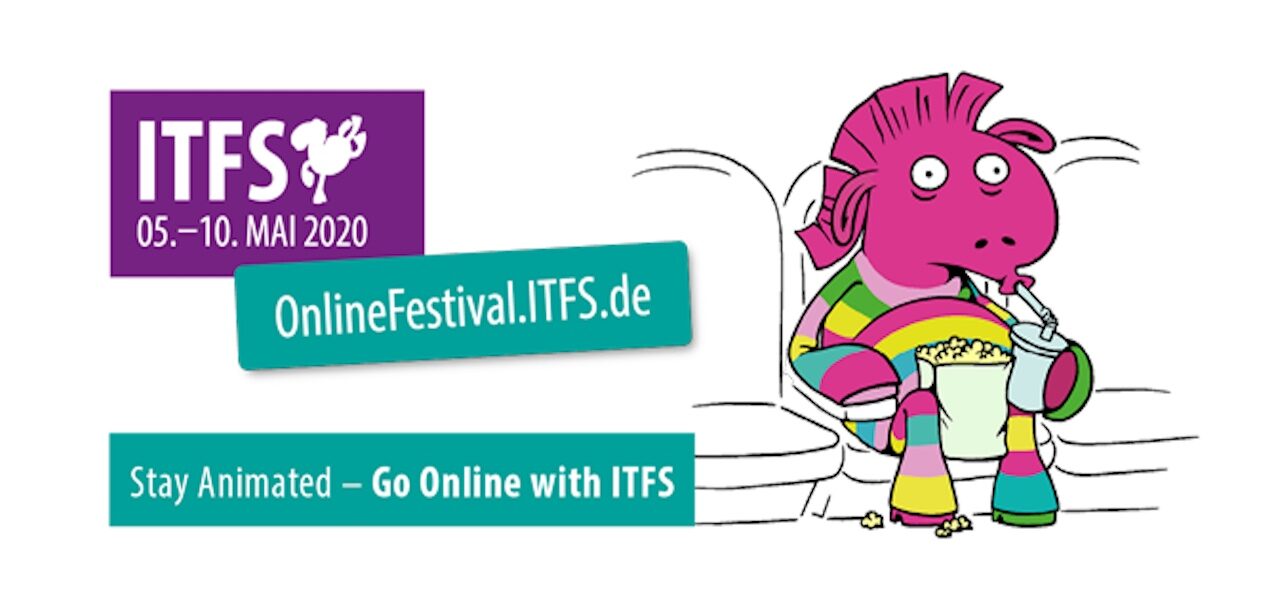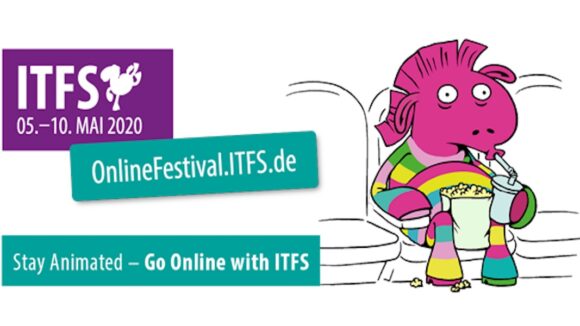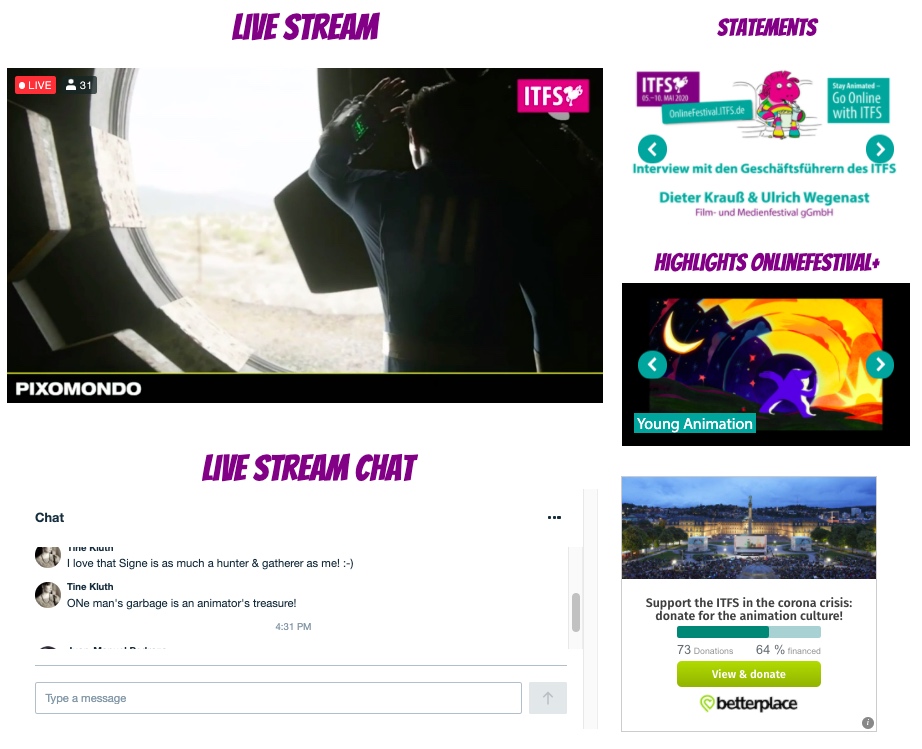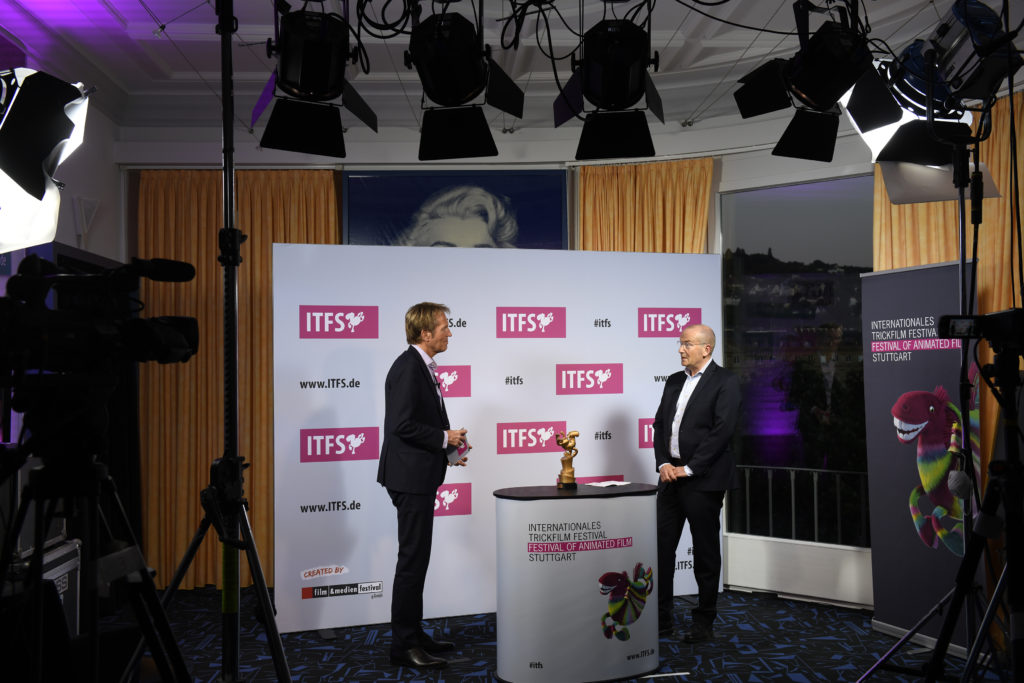

Do Virtual Festivals Work? To Find Out, We Attended Stuttgart Without Leaving The House.
I’ve just returned from my latest animation festival. For once, the journey back didn’t entail a flight and four trains on a hangover. All I had to do was quit my browser.
OnlineFestival.ITFS.de, the one-off virtual edition of the Stuttgart International Festival of Animated Film (ITFS), wrapped up on Sunday, capping six days of online films, masterclasses, interviews, and professional meetings. Stuttgart is one of European animation’s major events, and this was the most substantial virtual animation festival to date.
Unlike the first film festivals to be pushed online by the coronavirus, such as SXSW and Ann Arbor, OnlineFestival.ITFS.de wasn’t entirely free. It adopted a tiered format: a free live stream was complemented by a €9.99 (US$10.86) pass, which let the viewer stream this year’s competition films and more, and a €19.99 pass, which added access to professional events. (Watch the festival’s official highlights reel, in German and English, below.)
Naturally, I got an e-badge and checked the event out. What follows are my impressions — not of the programming but of the online festival experience itself, which is becoming something of a fixture in this crisis…
Access
Tiered pricing strikes me as a nuanced, sustainable way to structure an online festival. The live stream, hosted prominently on the homepage and the festival’s Vimeo, Youtube, and Facebook pages, presented a grab bag of talks, interviews, and (mostly old) films. This feature makes sense as a tool to raise awareness of OnlineFestival.ITFS.de and spur engagement. Whenever I checked in, the number of viewers was between 50 and 70, rising to 150 for the award ceremony.
Putting the rest of the festival behind a paywall creates revenue for the festival and (hopefully) filmmakers/distributors. (OnlineFestival.ITFS.de also had sponsors and advertising.) The paywall also reassures those filmmakers/distributors who worry that a free, open screening of their new film would jeopardize existing arrangements, like pre-sales to a channel.
The organizers tell me that around 75% of shorts and 30% of features initially selected for the real-life festival ended up on OnlineFestival.ITFS.de. That’s more than enough to justify the €9.99 price tag, but also evidence that a significant number of filmmakers/distributors decided the virtual event wasn’t worth their while.
The live events
Masterclasses and Q&As were spread across two main time slots: early afternoon and early evening (German time). An obvious advantage of the virtual format is that international guests can participate with relative ease. OnlineFestival.ITFS.de made the most of this: I watched talks by industry figures living in the U.S., France, and Saudi Arabia. Viewers were invited to ask questions via Zoom, although I didn’t see much uptake of this feature.
There were sometimes issues with sound levels and lag: during one masterclass, the stream frequently paused for up to ten seconds at a time. This problem is endemic to live online talks of this kind, not unique to Stuttgart. On the other hand, everything ran on time — a rarity at festivals.

The films
The various competition strands and sidebars were neatly presented on separate pages. No films (bar two features) were geo-restricted. From the viewpoint of a short-film director vying for the audience’s attention, this format struck me as both more and less democratic than a real-life festival.
More democratic because all the films are there, displayed individually and available to watch at any time. The size of your audience is not dependent on the vagaries of screenings — there are no graveyard slots, no inconvenient venues far from the festival hub. Less democratic because the audience is not captive. In a screening, the shorts are chosen for me, and I devote equal attention to all. At my computer, lacking this structure, I found myself selecting films by filmmakers I already knew. With video on demand, our biases are more likely to shape our viewing habits.
Several competition films were accompanied by short recorded introductions from the filmmakers. These often provided fascinating insight into the production process, and were sometimes creative or humorous in their own right.
The schedule
By and large, the live stream was active from noon to midnight, German time. Someone in California, say, wouldn’t be able to make the most of it (although, with a pass, they’d be able to stream the competition films at any time, of course). This isn’t such a problem for Stuttgart, which mostly draws German and European crowds. But I’m curious to see how Annecy, the most globalized animation festival, handles the scheduling at its online edition next month.

The interface
Given the complex structure of OnlineFestival.ITFS.de, its layout was remarkably clear. Each tier of the festival, plus the accompanying Gamezone fair, had its own tab. Peripheral info — timetables, festival highlights, advertising, etc — was displayed without cluttering the page.
The live stream intermittently slipped into German, but this was no more confusing than navigating a German event in real life. Next to the stream was a live text-chat field, where organizers diligently answered questions and viewers created a semblance of a festival’s social life by commenting on the program.
The audience
Who is an event like OnlineFestival.ITFS.de for? Professionals with specific projects to discuss were catered for: the €19.99 pass gave access to business-to-business meetings, which I didn’t attend.
Industry people who generally want to network — a major demographic at any festival — will find these festivals frustrating. There’s no online substitute for bonding with strangers over a drink, and nobody is talking of virtual festivals permanently replacing real-life ones. However, in the long term, organizers may see a benefit in broadening their online offering. Some are already talking about this.
Meanwhile, animation lovers who simply wanted to watch films were well served by OnlineFestival.ITFS.de. Attending a real-life festival costs much more than €9.99; for many, it simply isn’t an option. By opening a selection of the latest films to anyone with a stable internet connection, virtual festivals could convert new audiences to animation. The organizers at Stuttgart say this is their ambition. The question is: will these new converts attend the real-life edition next year, or will they expect another substantial online program?
Stuttgart’s organizers had several advantages: their reputation, the backing of sponsors (which surely helped keep the ticket price low), and the relative novelty of the virtual experience. What about smaller festivals planning online events in the coming months? The social experience is already lost to them. On top of that, proactive animation fans will have already seen most of the films on the circuit, thanks to the likes of OnlineFestival.ITFS.de and Annecy Online. What selling points are those smaller festivals left with? What will they have to do to draw viewers — and filmmakers?
I enjoyed my time on OnlineFestival.ITFS.de (without even drinking a drop). But its success raises as many questions as it answers.

